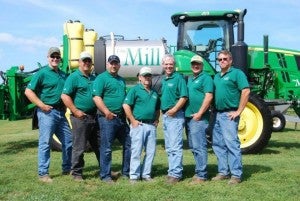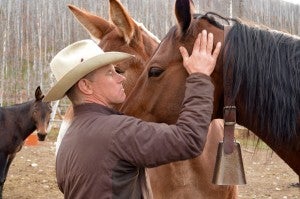
Callie Eideberg, EDF’s new senior policy manager for sustainable agriculture.
We often hear about the deep-rooted water quality challenges in the Chesapeake Bay, and how not enough progress is being made. While agriculture, urban/suburban runoff, vehicle emissions, and other sources share responsibility for the bay’s poor health, all too often farmers shoulder most of the blame.
Earlier this month, USDA released the Chesapeake Bay Progress Report, which revealed that since 2009, federal investments helped area farmers implement nearly $1 billion worth of conservation practices on more than 3.5 million acres and install nearly 3,500 miles of riparian buffers that reduce nutrient runoff into waterways. Between 2006 and 2011, farmer efforts reduced sediment loss by 15.1 million tons per year.
This is encouraging news, and part of the reason the overall health of the bay is improving. Supporting farmers and their livelihoods is key to solving the watershed’s environmental challenges. As the report notes, “a thriving and sustainable agricultural sector is critical to restoring the bay.”
There is still a lot of work to do. Because a significant increase in public funding is unlikely, relying too heavily on federal investment in voluntary conservation programs is not a good pathway to fully heal the bay.
Here are two ways that agriculture can further accelerate improvements in the watershed. Read More











 I first met Justin Knopf at a meeting in DC about five years ago. At 6’3”, he definitely stood out, but not just physically. He openly conveyed how important his family and his land are – the reason he cares so much about making sure his Kansas farming operation can live on is for his children. It’s rare to meet someone so articulate, sincere and committed to sustainability.
I first met Justin Knopf at a meeting in DC about five years ago. At 6’3”, he definitely stood out, but not just physically. He openly conveyed how important his family and his land are – the reason he cares so much about making sure his Kansas farming operation can live on is for his children. It’s rare to meet someone so articulate, sincere and committed to sustainability. Land O’Lakes SUSTAIN® platform – a powerful tool that can make a real impact in improving regional water quality — is coming to the Chesapeake Bay.
Land O’Lakes SUSTAIN® platform – a powerful tool that can make a real impact in improving regional water quality — is coming to the Chesapeake Bay.
 Today represents a huge advancement for sustainable agriculture, and a new era of food company collaboration. At the Farm Progress Show in Boone, Iowa, we are officially launching
Today represents a huge advancement for sustainable agriculture, and a new era of food company collaboration. At the Farm Progress Show in Boone, Iowa, we are officially launching 

 A team of researchers spent seven years dissecting, analyzing and reporting on California’s nitrogen cycle, and the results are eye-opening.
A team of researchers spent seven years dissecting, analyzing and reporting on California’s nitrogen cycle, and the results are eye-opening.